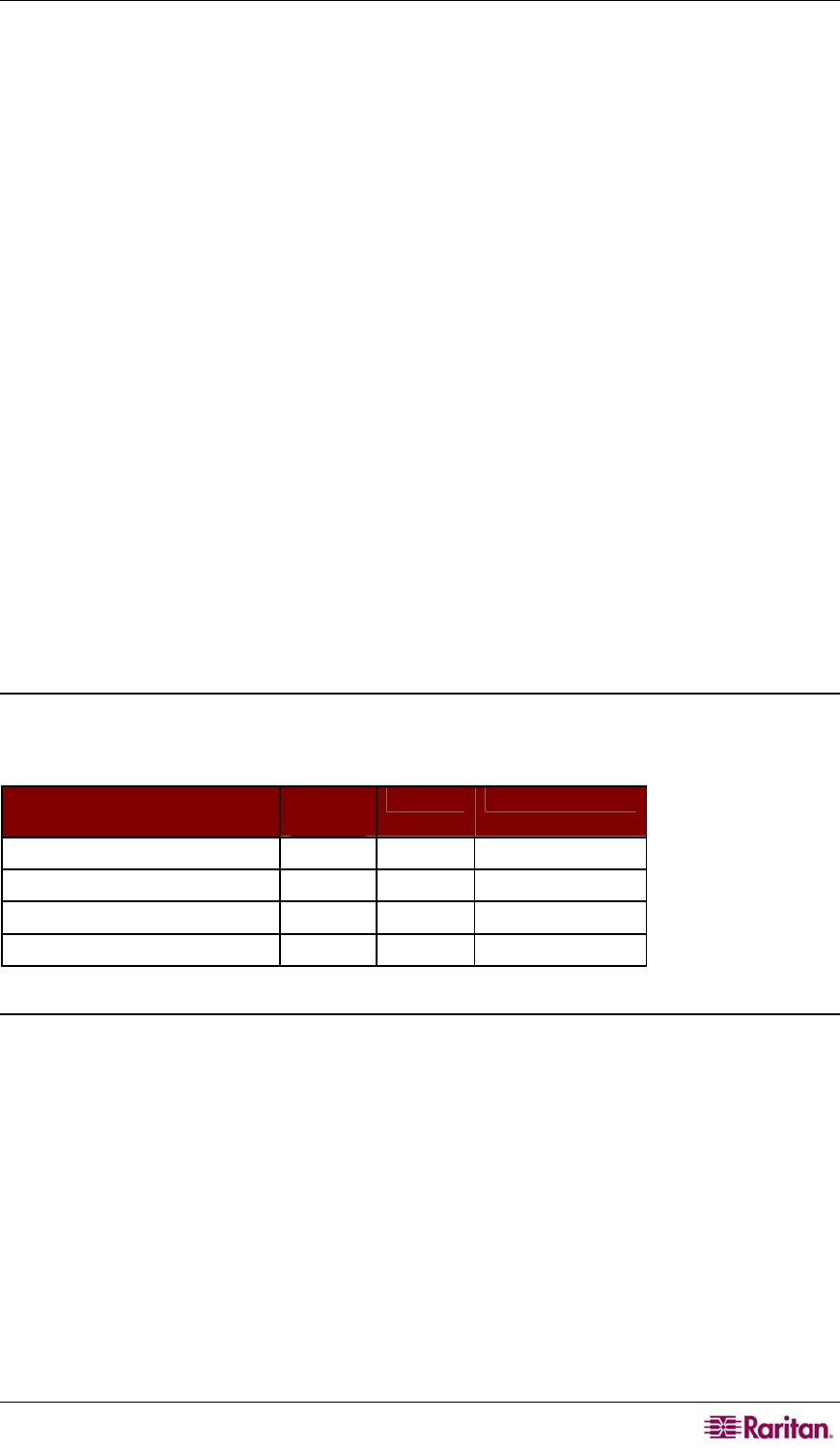Owner's manual
Table Of Contents
- Chapter 1: Introduction
- Chapter 2: Accessing CC-SG
- Chapter 3: Configuring CC-SG with Guided Setup
- Chapter 4: Creating Associations
- Chapter 5: Adding Devices and Device Groups
- Chapter 6: Configuring Nodes and Interfaces
- Chapter 7: Adding and Managing Users and User Groups
- Chapter 8: Policies
- Chapter 9: Configuring Remote Authentication
- Chapter 10: Generating Reports
- Audit Trail Report
- Error Log Report
- Access Report
- Availability Report
- Active Users Report
- Locked Out Users Report
- User Data Report
- Users in Groups Report
- Group Data Report
- AD User Group Report
- Asset Management Report
- Node Asset Report
- Active Nodes Report
- Node Creation Report
- Query Port Report
- Active Ports Report
- Scheduled Reports
- CC-NOC Synchronization Report
- Chapter 11: System Maintenance
- Chapter 12: Advanced Administration
- Appendix A: Specifications (G1, V1, and E1)
- Appendix B: CC-SG and Network Configuration
- Appendix C: User Group Privileges
- Appendix D: SNMP Traps
- Appendix E: Troubleshooting
- Appendix F: Two-Factor Authentication
- Appendix G: FAQs
- Appendix H: Keyboard Shortcuts

APPENDIX B: CC-SG AND NETWORK CONFIGURATION 217
CC-SG Communication Channels
The communication channels are partitioned as follows:
• CC-SG ↔ Raritan Devices
• CC-SG ↔ CC-SG Clustering (optional)
• CC-SG ↔ Infrastructure Services
• Clients ↔ CC-SG
• Clients ↔ Targets (Direct Mode)
• Clients ↔ Targets (Proxy Mode)
• Clients ↔ Targets (In-Band)
• CC-SG ↔ CC-NOC
For each communication channel, the tables in the sections that follow:
• Represents the symbolic IP Addresses used by the communicating parties. These addresses
have to be allowed over any communication path between the entities.
• Indicates the Direction in which the communication is initiated. This may be important for
your particular site policies. For a given CC-SG role, the path between the corresponding
communicating parties must be available and for any alternate re-route paths that might be
used in the case of a network outage.
• Provides the Port Number and Protocol used by CC-SG.
• Indicates if the port is Configurable, which means the GUI or Diagnostic Console provides a
field where you can change the port number to a different value from the default listed due to
conflicts with other applications on the network or for security reasons.
CC-SG and Raritan Devices
A main role of CC-SG is to manage and control Raritan devices (for example, Dominion KX,
KSX, etc.). Typically, CC-SG communicates with these devices over a TCP/IP network (local,
WAN, or VPN) and both TCP and UDP protocols are used as follows:
Communication Direction Port
Number
Protocol Configurable?
CC-SG → Local Broadcast 5000 UDP yes
CC-SG → Remote LAN IP 5000 UDP yes
CC-SG → Raritan Device 5000 TCP yes
Raritan Device → CC-SG 5001 UDP no
CC-SG Clustering
When the optional CC-SG clustering feature is used (that is, two CC-SG units are inter-connected
and function as one unit), the following ports must be available for the inter-connecting sub-
networks. {If the optional clustering feature is not used, none of these ports need to be made
available in the network.}










